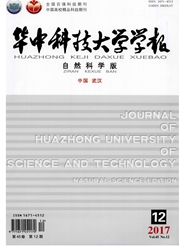

 中文摘要:
中文摘要:
鉴于Morpho蝴蝶翅膀呈耀眼蓝色光泽与蝶翅表面的微纳结构有密切联系,提出了一种服务于仿生微纳制造的优化设计方法.根据生物结构的形状与尺寸,结合微纳制造中的工艺约束,建立了便于制造的仿生模型.使用严格耦合波分析对仿生模型进行光学仿真计算.在此基础上,以提高仿生结构的蓝光波段(特征波长为470nm)反射率为目标,利用遗传算法对仿生模型进行了优化设计.所得到的最优结构反射率波峰均位于470nm附近,且反射率明显高于仿生结构.为了分析最优结构的蓝光波段高反射率机理,研究了不同层数最优结构的几何特征,计算了部分结构的磁场强度分布,确定了结构中影响反射率的主要参数.
 英文摘要:
英文摘要:
Brilliant and iridescent blue color of Morpho butterfly's wing is closely related to micronano structures of the wing. Based on the structural color, an optimal design approach was proposed to facilitate manufacturing artificial micro-nano structures that exhibit the same structural color. First, a biomimetic model was constructed via simplifying the shape of the butterfly structure and at the same time subject to the constraints of a given manufacturing technique. Then, the biomimetic model was optimized with the target of maximizing the reflectivity at blue band (wavelength of 470 nm). All the resulting optimal structures have maximal reflection at about 470 nm, and the reflection peaks are higher than that of the biomimetic model. The geometrical characteristics of the optimal structures were studied and the magnetic field maps were calculated. The results were used to analyze the mechanisms of high reftectivity of the optimal structures. The main parameters affecting the re flectivity were discussed.
 同期刊论文项目
同期刊论文项目
 同项目期刊论文
同项目期刊论文
 Optimal Design of 3-D Carbon Microelectrode Array for Dielectrophoretic Manipulation of Nanoparticle
Optimal Design of 3-D Carbon Microelectrode Array for Dielectrophoretic Manipulation of Nanoparticle Using hierarchy architecture of Morpho butterfly scales for chemical sensing: experiment and modelin
Using hierarchy architecture of Morpho butterfly scales for chemical sensing: experiment and modelin Stress-driven and Carbon-assisted Growth of SiOxNy Nanowires on Photoresist-derived Carbon Microelec
Stress-driven and Carbon-assisted Growth of SiOxNy Nanowires on Photoresist-derived Carbon Microelec Concentration gradient induced morphology evolution of silica nanostructure growth on photoresist-de
Concentration gradient induced morphology evolution of silica nanostructure growth on photoresist-de The relationship of selective surrounding response and nanophotonic structures of Morpho butterfly s
The relationship of selective surrounding response and nanophotonic structures of Morpho butterfly s Metal-Catalyst-Free Synthesis and Characterization of Single-Crystalline Silicon Oxynitride Nanowire
Metal-Catalyst-Free Synthesis and Characterization of Single-Crystalline Silicon Oxynitride Nanowire Shape and topology optimization for tailoring the ratio between two flexural eigenfrequencies of ato
Shape and topology optimization for tailoring the ratio between two flexural eigenfrequencies of ato Formation of submicron buckling patterns in thin metal film on micro-scale substrate by pyrolysis of
Formation of submicron buckling patterns in thin metal film on micro-scale substrate by pyrolysis of A level set method for shape and topology optimization of both structure and support of continuum st
A level set method for shape and topology optimization of both structure and support of continuum st 期刊信息
期刊信息
